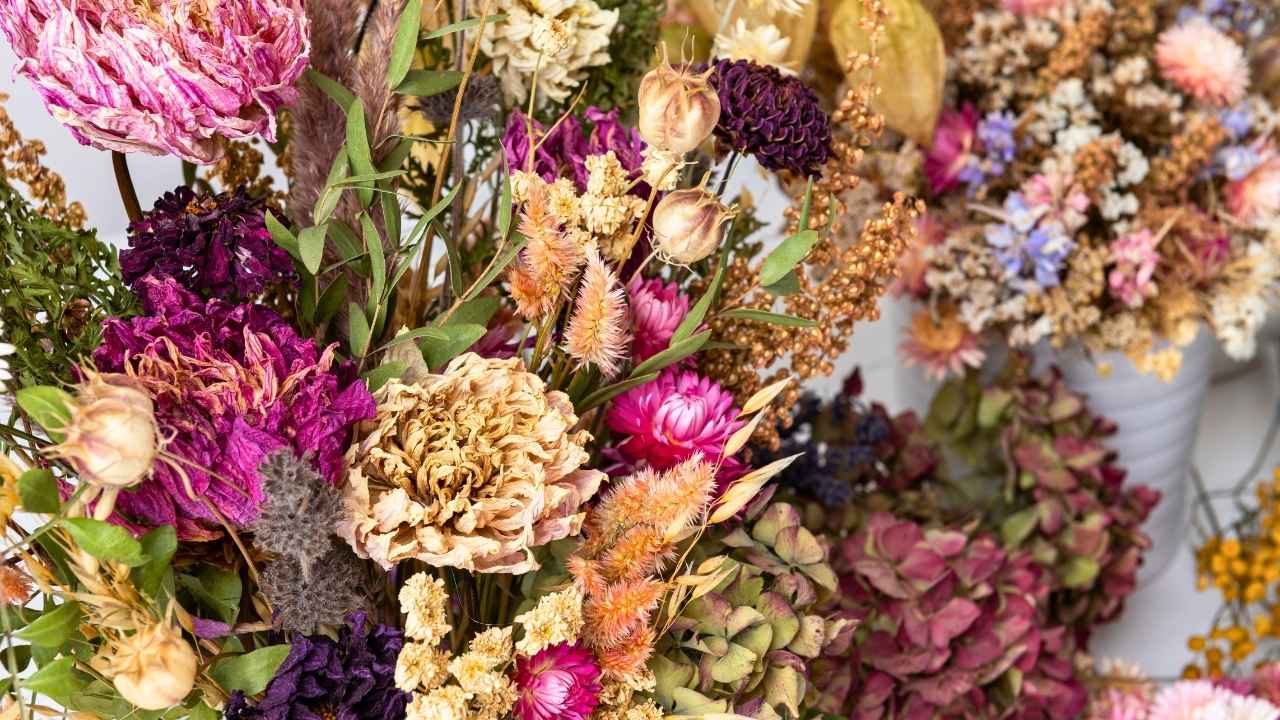fresh flowers are honest. they show up, blaze out, and leave you staring at a limp stem wondering where the magic went. drying is how you freeze the frame without turning it into plastic.
it’s memory with a backbone. pick right, prep smart, choose the right method, and you’ll keep that garden rush on a shelf where it can’t run.
why some blooms make it and others don’t
drying doesn’t fix. it preserves. start with clean, unblemished flowers or you’ll immortalize every bruise.
- cut at peak or a whisper before. plenty of heads keep opening after the cut.
- harvest mid-morning: dew gone, heat not vicious yet.
- only on dry days. if it just rained, wait. moisture is the enemy and it cheats.
prep that pays off
treat stems like athletes tapering before a meet.
- condition right after cutting: at least two hours in cool water. this “hardens” them so they hold shape later.
- strip most foliage, especially the lower half. leaves are tiny water tanks and mold magnets.
- trim for the method: about six inches for hanging; one to two inches for desiccants.
- keep tools and containers clean. crud today is regret in two weeks.
air drying: the honest, rustic route
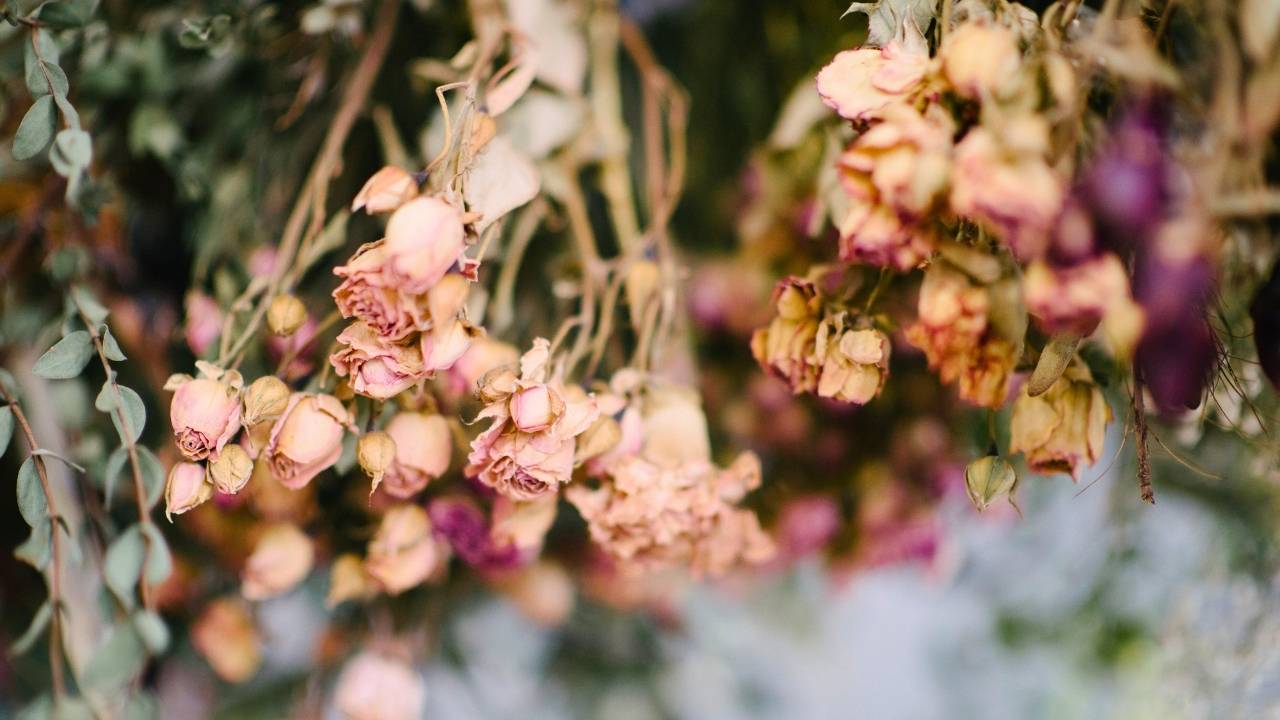
the move you picture: bunches upside down in a dark corner. not quaint—effective.
how to
- make small, uniform bundles for airflow.
- secure with a tight rubber band so it keeps gripping as stems shrink.
- hang in a space that’s dark, dry, and ventilated. closets beat kitchens. attics work if they’re not damp.
- wait two to four weeks. done when petals are crisp and stems feel rigid.
pro tip
shape while pliable. set a soft curve and it’ll dry locked in.
flowers that shine
roses, lavender, strawflower, statice, baby’s breath, globe thistle, eucalyptus, celosia, gomphrena, yarrow, hydrangea (see vase trick), plus ornamental grasses and grains.
dry-in-vase: the low-effort upright
hydrangea loves this. you will too.
- put mature stems in a vase with one to two inches of water.
- park out of direct sun. don’t crowd the vase.
- as the water disappears, the heads dry standing tall. easy win.
desiccants: lifelike shape and color
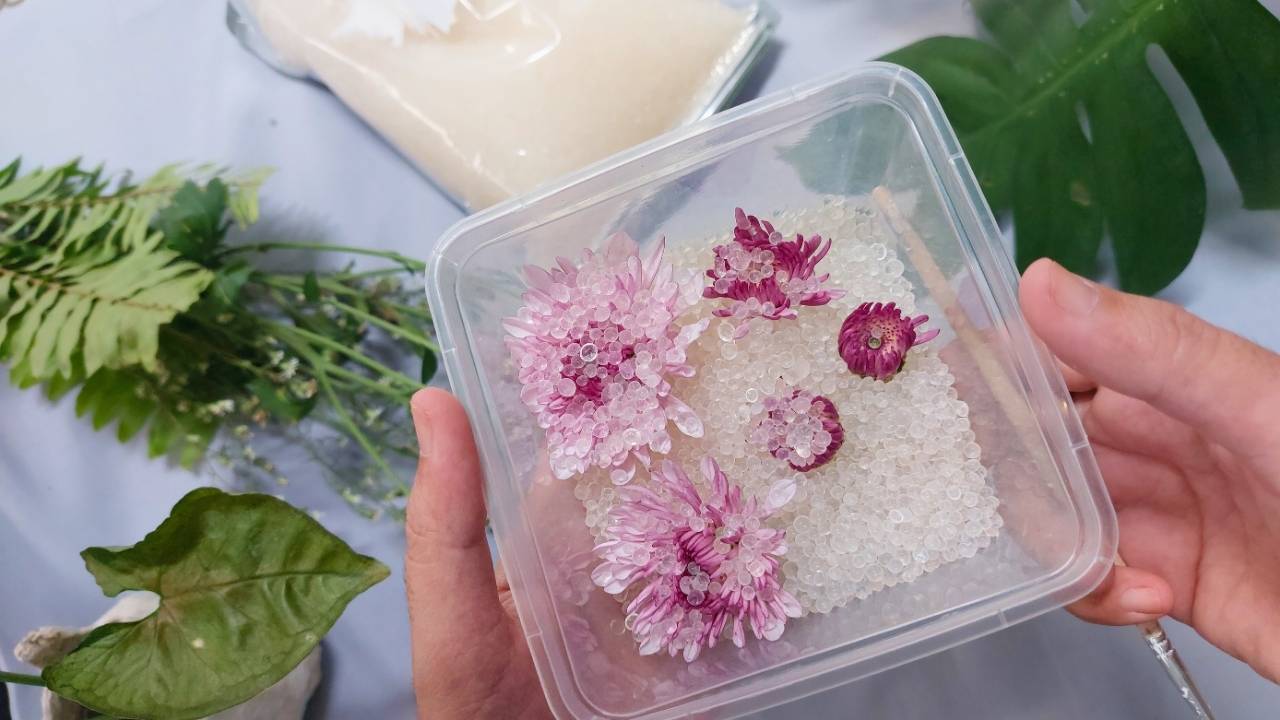
if you want the bloom to look like itself, not a faded memory, bury it in a drying agent that pulls moisture fast and props up the petals.
silica gel: the gold standard
granular silicon dioxide that drinks water and supports structure. reusable. worth it when the flower matters.
safety
wear a dust mask when pouring; gloves help. use dedicated containers. never return them to kitchen duty.
step by step
- trim stems to one or two inches.
- pour a one to two inch base layer in an airtight container.
- place blooms on top; flat faces (zinnias, daisies) can go face down.
- bury slowly with a spoon so crystals settle between petals before covering the top.
- seal and wait. most small to medium blooms dry in two to seven days; dense ones can take weeks. check, don’t guess.
- to reveal, tilt and pour off gel, lift from underneath, and dust gently with a soft brush.
maintenance
indicator crystals change color when saturated. reactivate on a baking sheet around 250°F until the original color returns.
great candidates
roses, peonies, zinnias, dahlias, lilies, orchids, pansies, anemones, chrysanthemums, water lilies, carnations. tulips and some daffodils can work but demand finesse.
budget-friendly options
- fine sand: cheap but heavy. best for tougher blooms and careful hands.
- 100% silica cat litter: same chemistry as craft gel, often cheaper. check the label for purity.
pressing: flat, delicate, frame-ready
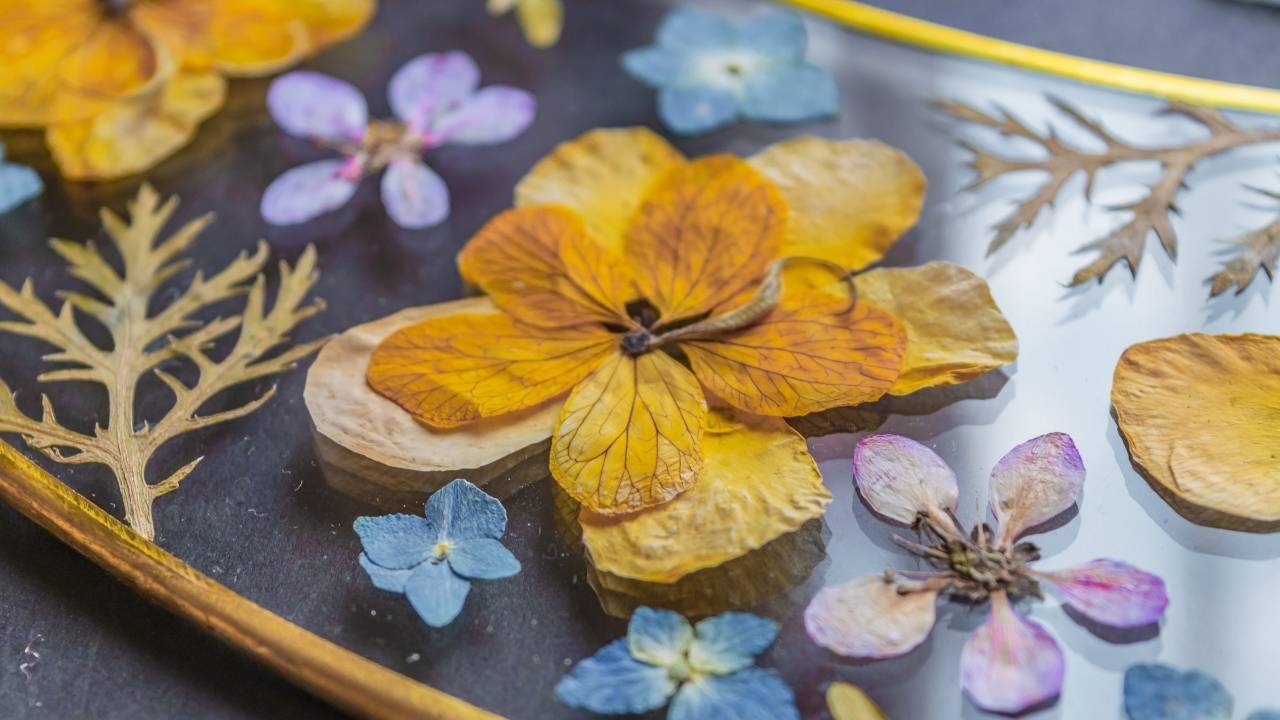
two-dimensional on purpose. perfect for cards, frames, bookmarks, and handmade paper.
heavy book method
simple, reliable, oddly satisfying.
- sandwich blooms between absorbent, non-stick layers: parchment, blotting paper, coffee filters, or newsprint.
- tuck inside a large book you don’t mind sacrificing. stack more weight on top.
- wait two to four weeks. aim for even contact across the flower, not brute force.
wooden press
for repeat work and clean, consistent results.
- two flat boards with bolts and wing nuts at the corners.
- layer: wood, corrugated cardboard, blotting paper, arranged flowers, blotting paper, cardboard. repeat. tighten evenly.
heat-assisted pressing
- microwave flower press or a diy stack (parchment + two microwave-safe tiles). short bursts, frequent checks. done in minutes.
- warm, dry iron works in a pinch. press in place; don’t slide. quickest path to scorch if you get cocky.
press-friendly
pansies and violas, cosmos, daisies, larkspur, forget-me-nots, ferns, queen anne’s lace, buttercups, small single-petal roses.
pressing troublemakers
peonies, big multi-petal roses, lilies, tulips, succulents, orchids, impatiens. if you must, dismantle and press petals or parts.
microwave + silica: the fast 3d method
brilliant color, minutes of work, plenty of ways to mess it up. practice on flowers you don’t love first.
why it works
the microwave heats the gel more than the bloom. hot gel then dries the flower evenly as it cools.
how to
- use a microwave-safe container you’ll never use for food again.
- bury blooms in silica gel as usual.
- place a separate cup of water in the microwave with the container. this tempers heat and helps prevent scorching.
- run at low to medium power in 30–60 second bursts, checking between rounds. total heat time is often two to five minutes.
- after the last burst, remove carefully, cover loosely, and let sit at room temp for a full 24 hours. this finish matters more than your patience.
- unearth and brush clean.
flowers that handle the heat
roses, carnations, chrysanthemums, dahlias, peonies, zinnias, gerbera daisies, tulips.
choosing the right path

start with the end use. shadow box or vase? you need 3d. frame, card, bookmark? you need flat. match flower type to method and be honest about your timeline and budget.
| method | best for | average time | cost | difficulty | result |
|---|---|---|---|---|---|
| air drying (upside down) | hardy, lower-moisture blooms; rustic 3d | 2–4 weeks | very low | easy | good shape; color fades if light hits |
| dry-in-vase | hydrangea-style heads; upright 3d | 1–3 weeks | very low | easy | natural silhouette; moderate color |
| desiccant (silica gel) | delicate, multi-petal, moisture-rich; lifelike 3d | 2–7 days (longer if dense) | moderate–high upfront; reusable | intermediate | excellent shape and color |
| pressing (book/press) | flat or single-layer blooms; 2d | 2–4 weeks | low–moderate | easy–intermediate | fully flat; color holds if dried dark |
| microwave + silica | dense, layered blooms; fast 3d | minutes + 24-hour rest | moderate–high | advanced | excellent color; good 3d when timed well |
long-term care: keep them looking alive
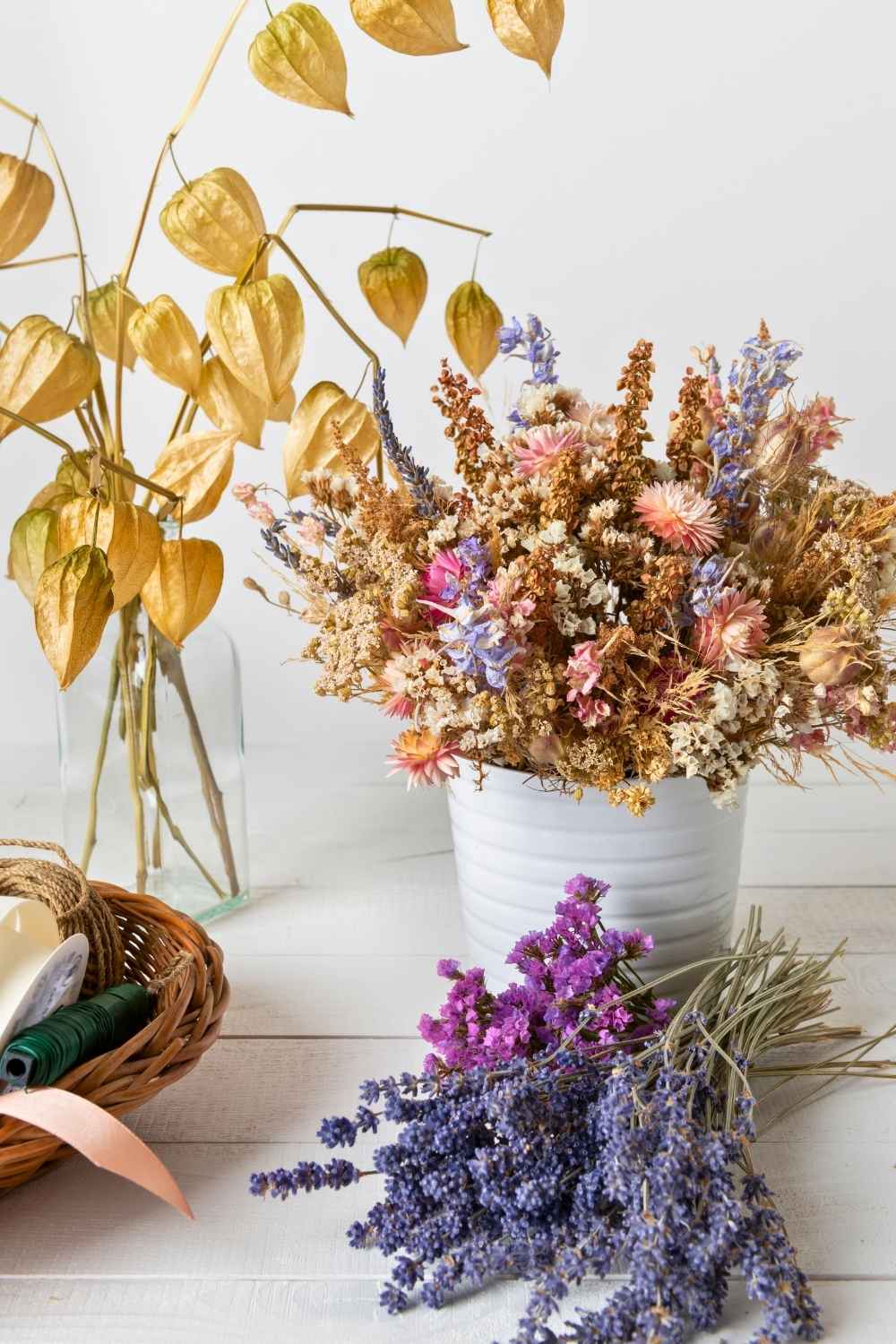
three villains: light, humidity, pests.
- sunlight bleaches pigment. display out of direct beams.
- humidity makes dry tissue drink again. it sags, browns, molds. avoid bathrooms and kitchens.
- insects like plant material. sealed storage keeps your collection off their menu.
upkeep
handle sparingly and support stems when you move pieces. dust with a feather duster, a soft paintbrush, or a hair dryer on the coolest, lowest setting from about a foot away. want extra armor? a light mist of unscented hairspray, matte acrylic sealer, or a floral preservative with uv blockers helps.
storage
wrap gently in kraft paper or acid-free tissue. tuck into a rigid lidded box. avoid floppy tubs and plastic bags that trap moisture.
add a few silica packets. store cool, dark, dry. done right, sturdy classics like roses and lavender last years.
what to make once you’ve nailed the dry
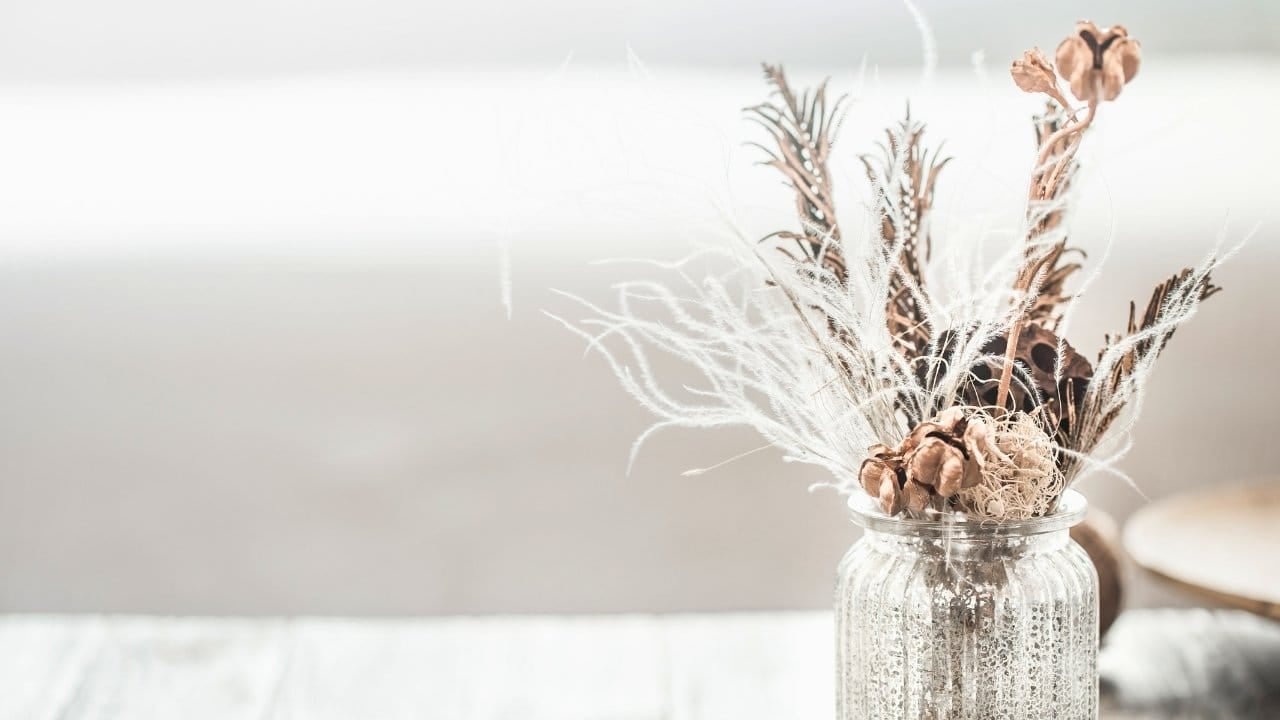
home decor
arrangements in vases or pitchers, wreaths and garlands for walls, pressed botanicals in double-glass frames, 3d blooms in shadow boxes.
gifts and crafts
resin coasters, pendants, rings, keychains, bookmarks. candles with petals set near the shell. potpourri with a fixative like orris root and a few drops of essential oil. stationery dressed with pressed florals. handmade paper stirred with petals.
daily life touches
tie a mini bundle onto wrapped gifts. slide pressed sprigs under a clear phone case. seed journals and scrapbooks with real moments. mix dried rose, lavender, and calendula into bath salts or scrubs.
important note on edibles
only use flowers labeled edible and grown without pesticides. anything from a florist or dried with non-food-safe methods (like silica gel) is for eyes, not mouths.
find the beauty
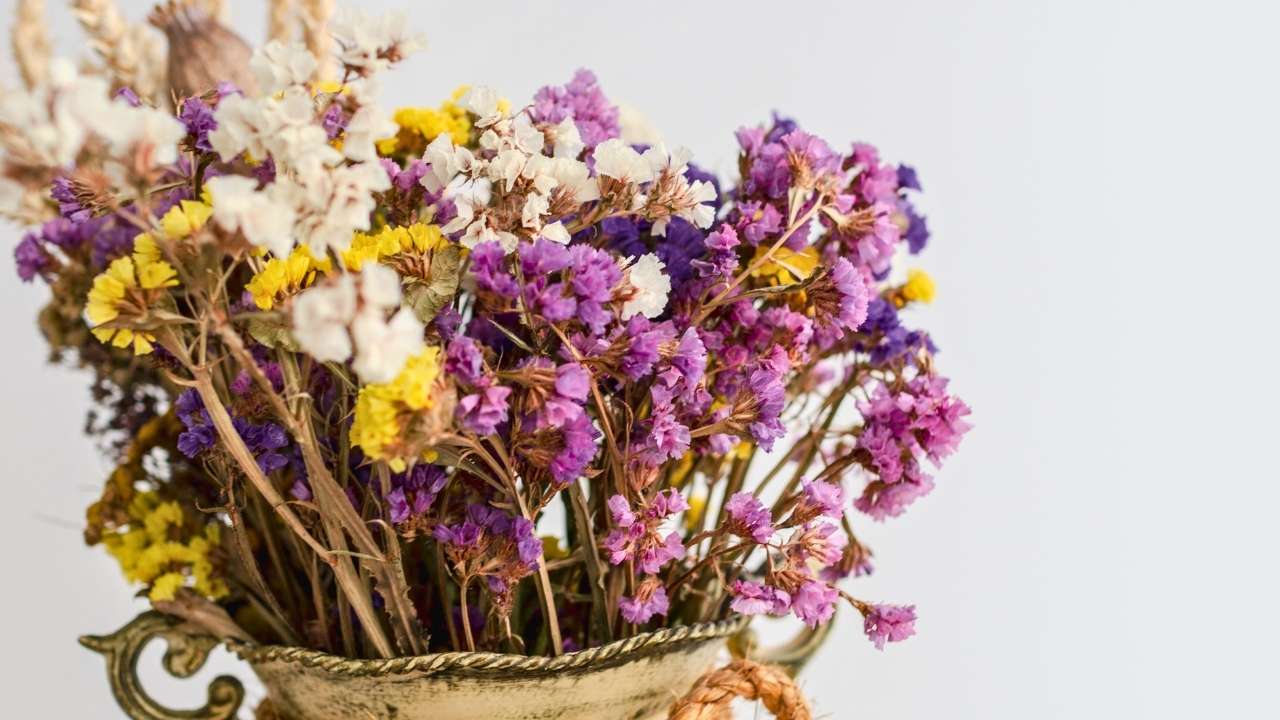
drying is the clean handshake between garden, craft, and memory. choose well, keep moisture in check, match method to mission, and give it time. you’re not fighting decay so much as out-maneuvering it.
do that, and the season sticks around—quiet, sturdy, and still very much alive.
Davin is a jack-of-all-trades but has professional training and experience in various home and garden subjects. He leans on other experts when needed and edits and fact-checks all articles.
